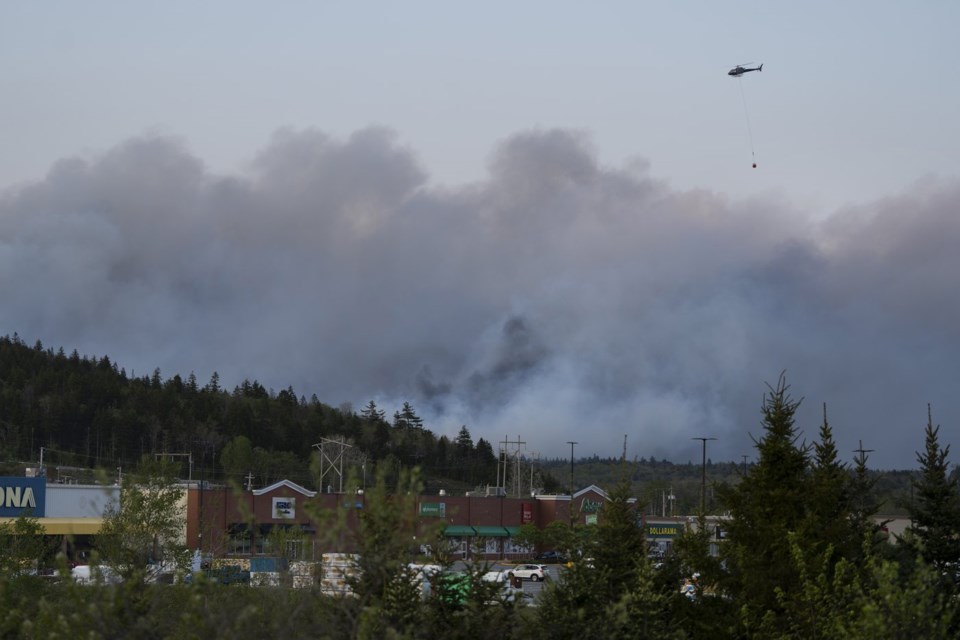HALIFAX — The devastating wildfires and deadly flooding that plagued Nova Scotia last year have resulted in $490 million in insured losses, the Insurance Bureau of Canada said in a report released Thursday.
"The Nova Scotia floods and wildfires illustrated that we are not ready as a country to defend against severe weather escalating due to climate change," Amanda Dean, an Insurance Bureau vice-president, said in a statement.
In May and June of last year, two major wildfires — one in the Barrington area and the other north of Halifax in Upper Tantallon — destroyed more than 200 homes and cottages, and more than 150 other structures. The two fires were among 220 wildfires reported across Nova Scotia in 2023, marking the province's worst wildfire season on record with 25,000 hectares left scorched.
The Canadian Forest Service determined that when the fires started, the province was experiencing its driest conditions since the Second World War. Both fires spread quickly with the help of strong winds.
On July 21-22 of last year, four people — including two children — died when the municipality of West Hants experienced widespread flooding after 250 millimetres of rain fell in just 24 hours. Major flooding caused by a procession of thunderstorms was also reported in East Hants and the Lunenburg and Queens County areas.
"These back-to-back disasters illuminated the cascading challenges of managing multiple crises in quick succession and underscored the pressing need for comprehensive disaster preparedness," the report says.
The insurance industry's report says 88 per cent of claims related to a wildfire near Halifax have been resolved, as have 90 per cent of the flood claims.
Almost half of all claims — valued at more than $240 million — were filed for lost or damaged personal property in the Upper Tantallon area. In all, 3,240 claims of this type were filed in the area north of Halifax, and the average claim was $81,000.
As for the outstanding claims, the industry group says personal property insurance claims for the rebuilding of homes typically take more than one year to settle, and claims are generally not considered closed until all payments have been processed.
The report says the claims process has been delayed by a scarcity of skilled labour, shortages of building materials and a lack of adjusters.
Dean said the industry believes large-loss events should be expected almost annually.
On Sept. 24, 2022, less than a year before the 2023 weather disasters, hurricane Fiona caused widespread damage in the Maritimes and in southwestern Newfoundland. It was the costliest extreme weather event recorded in Atlantic Canada, causing $660 million in insured damage.
Less than two weeks ago, a 13-year-old boy in Wolfville, N.S., died when he was swept into a drainage ditch during a flash flood caused by heavy rain. The flooding caused extensive damage across the western part of the province.
The report says insured damage related to extreme weather events in Canada has shown an upward trend with losses exceeding $3 billion annually in 2022 and 2023. By comparison, between 1983 and 2009, Canadian insurers averaged $512 million a year in losses related to severe weather.
This report by The Canadian Press was first published July 25, 2024.
Michael MacDonald, The Canadian Press

